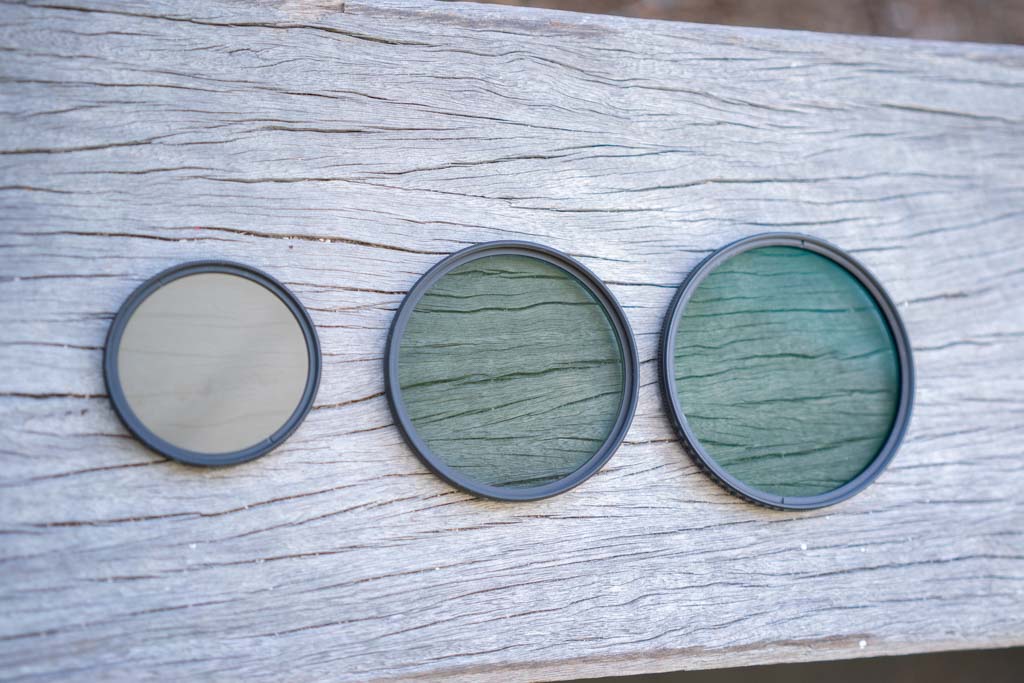



1. No CPL; 2. Hoya UXII; 3. Hoya HD MkII; 4. K&F Concept Nano-D Series
Exposure corrected, same White Balance. 1. No CPL; 2. Hoya UXII; 3. Hoya HD MkII; 4. K&F Concept Nano-D Series
Exposure corrected +3 stops in Lightroom. 1. Hoya UXII; 2. K&F Concept Nano-D Series; 3. Hoya HD MkII;
In the low light test, looking at the ceiling it is clear that the top-priced Hoya is the winner
Hoya UXII, Hoya HD MkII, K&F Concept Nano-D Circular Polarizing Filter
Apart from the flare, you can see in the other pictures that the K&F and Hoya are almost identical. They both have a slightly warm-green tint and comparable light transmission. I wouldn’t be able to tell which is which.
I’m happy with the results, and I think Ken Faith definitely deserves a spot in the spotlight, offering excellent light transmission. I bought it for real estate photography to pair with my fast, wide-angle Viltrox 16mm f/1.8, which unfortunately had some noticeable green vignetting. The green cast from the K&F filter isn’t a problem at all. In addition to that, the lens flares pretty noticeably, so adding more flare isn’t a big deal—especially indoors, where the chances of flare are minimal. While the high-end Hoya filter is the clear winner here when considering price, you might want to go with K&F Concept depending on your specific needs. If you’re using a high-quality, multi-thousand-dollar lens, it makes sense to invest in the best solution, as I did, for the highest possible quality. For me, the Hoya UXII is now my go-to 2-stop ND filter, perfect for daylight flash portraits or slightly blurry street photography.
K&F Concept Nano-D Series official K&F Amazon Store affiliate link
I won’t be sharing any affiliate links for Hoya here. I highly recommend sticking to official stores since there’s a lot of counterfeit stuff out there, and I wouldn’t trust unofficial retailers. If you’re looking to get Hoya, your best bet is to buy it from a nationwide chain store or directly from their website.